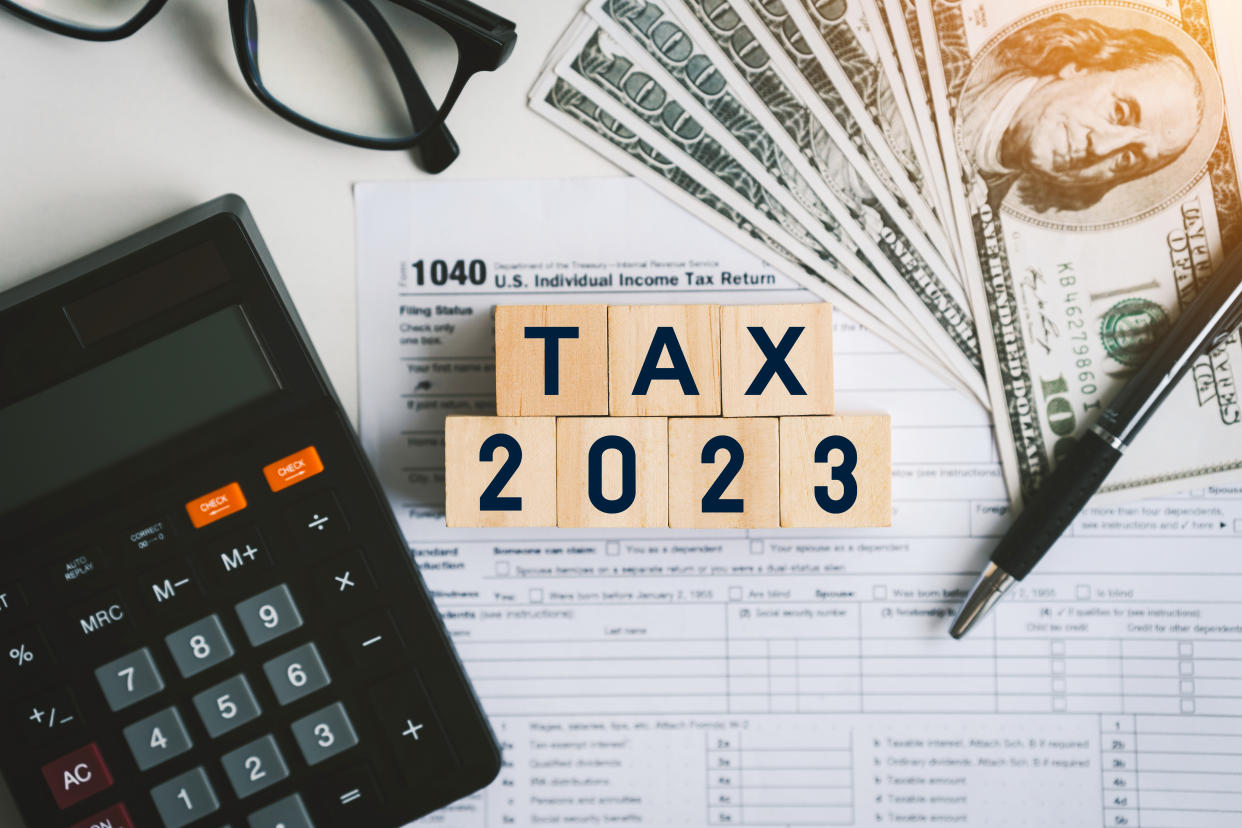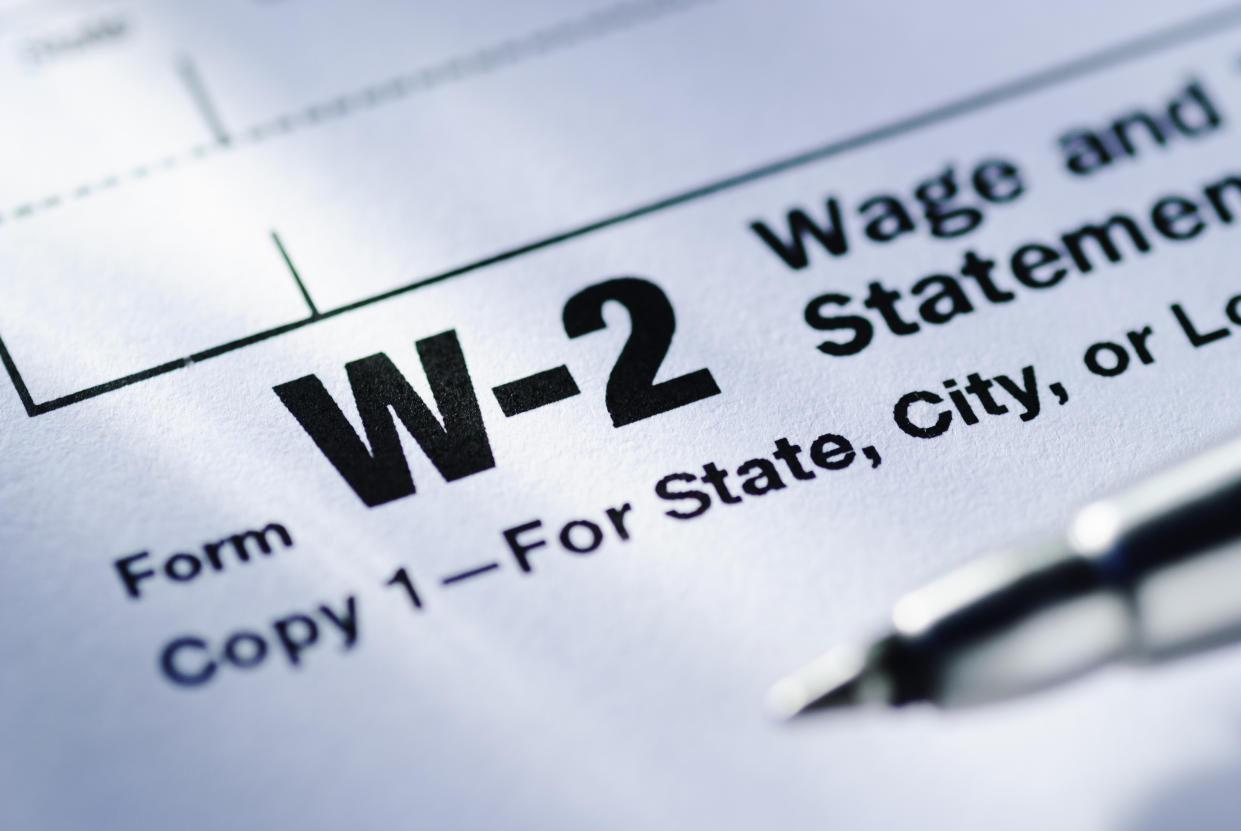The nation’s tax-filing season begins on Monday, Jan. 23.
That’s the first day the Internal Revenue Service will accept and process federal returns for the 2022 tax year, the agency announced on Thursday. Taxpayers have until April 18 this year to file their return without requesting an extension. (Victims of California's severe winter storms have until May 15, 2023.)
The IRS expects to receive more than 168 million individual tax returns this year. The fastest way to get your refund is by filing electronically with direct deposit and avoiding a paper tax return, the agency reminded taxpayers.
"We’ve trained thousands of new employees to answer phones and help people. While much work remains after several difficult years, we expect people to experience improvements this tax season," said Acting IRS Commissioner Doug O’Donnell in a press statement. "That’s just the start as we work to add new long-term transformation efforts that will make things even smoother in future years."
Here are other key dates during tax-filing season you should know.
Friday, Jan. 13.
IRS Free File opens on Friday with participating providers accepting completed returns and holding them until they can be filed electronically with the IRS. The program allows taxpayers who earned $73,000 or less in 2022 to file their taxes electronically at no cost using software provided by tax-filing companies.
Tuesday, Jan. 17
Self-employed workers and taxpayers with income other than employment wages have until Jan. 17, 2023, to catch up on what they owe. This deadline is the fourth and final day to make 2022 estimated tax payments.
You may need to make estimated payments if you expect to owe more than $1,000 in taxes after deducting federal withholdings and refundable credits. Income other than wages includes interest, dividends, stock sales gains, and taxable alimony.
You can use Form 1040-ES to figure out your liability. Payments can be made online, over the phone, or by mailing in a check or money order.
Monday, Jan. 23
The IRS begins accepting individual electronic returns. The agency will likely receive more than 168 million tax returns, with more than 90% of those expected to be e-filed. You can file forms such as 1040, 1040A, and 1040EZ electronically or mail a paper return to the agency.
The IRS generally issues refunds about three weeks after returns are electronically filed. To get your refund even faster, choose direct deposit instead of a mailed check.
Tuesday, Jan. 31
Businesses and companies must provide W-2 forms to employees by Jan. 31, 2023, either electronically or by mail. Reach out to your employer if you don’t receive a copy of your W-2 by early February. If your employer is not available, contact the IRS at 800-TAX-1040 for assistance.
Businesses and companies also must provide certain 1099 statements to recipients by Jan. 31, 2023, either electronically or by mail. The 1099 forms include:
1099-NEC for nonemployee compensation
1099-MISC for miscellaneous income
1099-DIV for dividends and distribution
1099-INT for interest income
1099-R for retirement distributions
Reach out to your 1099 payers if you don’t get your statements by early February, according to the IRS. If payers are not available, contact the IRS at 800-TAX-1040 for assistance.
Wednesday, Feb. 15
By law, the IRS must wait until mid-February to issue tax refunds for taxpayers who claimed either the Earned Income Tax Credit (EITC) or the Additional Tax Credit (ACTC). If you claimed these credits, filed your return electronically, and selected direct deposit, the earliest you can expect your tax refund is Feb. 28, the IRS said, as long as there's no issue with your return.
Additionally, businesses and companies must provide brokerage 1099 statements to recipients by Feb. 15, 2023, either electronically or by mail. These forms include 1099-B (brokerage statements) and 1099-S (real estate sale or exchange). Contact your 1099 payers if you don’t receive your statement by early February. Otherwise, reach out to the IRS at 800-TAX-1040 for assistance.
Wednesday, March 15
Partners and investors in partnerships should file their partnership return by this day. Partnership returns include Schedule K-1s, forms that show an individual’s share of earnings, losses, and dividends. The Schedule K-1s are for the taxpayers to keep unless otherwise instructed, and taxable amounts are included in the taxpayers' returns as income.
Partnerships can request a six-month extension to file their tax returns. This request is separate from extension request for individual tax returns.
Tuesday, April 18 – Tax Day
Tax day traditionally falls on April 15, but this year that date falls on a Saturday. Typically, the next business day after April 15 is tax day, which would be April 17 this year. But that is also the District of Columbia’s local holiday, Emancipation Day, which the IRS observes. That means tax day this year is on April 18, which is the deadline for filing a tax return electronically (or postmarking a paper return) or requesting an automatic extension.
To get an extension, choose the option online while making your tax payment or by mailing your payment in along with Form 4868. If you request an extension, you get six additional months to file your tax return, but you still must pay any estimated tax liability by April 18.
You can also make 2022 contributions to a traditional IRA, Roth IRA, SEP IRA, Health Savings Accounting (HSA), or solo 401(k) by this date. You can also withdraw excess contributions if your tax return has not yet been filed.
If you have more than $10,000 in a foreign bank account(s), you must file the Foreign Bank and Financial Accounts, or Form 114, by this date. If you had one or more household employees in 2022, you must file Schedule H and pay household employment taxes along with your 2022 tax return.
Taxpayers who make estimated payments should make their first installment for 2023 by April 18.
Monday, May 15
Victims of California's severe winter storms now have a postponed tax deadline of this date to file individual and business returns and make payments.
Thursday, June 15
U.S. taxpayers living abroad should have filed their tax returns or requested a four-month automatic extension by this date. You can request the extension by making tax payments online or mailing your payment in along with Form 4868.
Taxpayers who make estimated payments should make their second installment for 2023 by this date.
Thursday, Sept. 15
Partners and investors who requested a six-month extension to file their partnership return must file the return by this date. The partnership should also distribute Schedule K-1s to individuals by the time of filing.
Taxpayers who make estimated payments should make their third installment for 2023 by this day.
Monday, Oct. 16
If you requested a six-month extension, this is the final deadline to file your 2022 federal tax return. The deadline also applies to U.S. taxpayers living abroad who requested the four-month extension.
This is also the deadline to make 2022 contributions to SEP IRA and solo 401(k) if the employer filed an extension by April 18.
Rebecca is a reporter for Yahoo Finance.
Click here for the latest stock market news and in-depth analysis, including events that move stocks
Read the latest financial and business news from Yahoo Finance
Download the Yahoo Finance app for Apple or Android
Follow Yahoo Finance on Twitter, Facebook, Instagram, Flipboard, LinkedIn, and YouTube.
Source: Read Full Article


